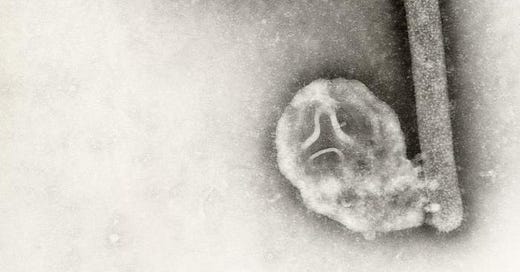In a follow-up report to the human H5N1 avian influenza in Texas nearly two months ago, the Michigan Department of Health and Human Services (MDHHS) and the Centers for Disease Control and Prevention (CDC) report on the first case of influenza A (H5) virus identified in a Michigan farmworker.
This is the second case associated with an ongoing multistate outbreak of A(H5N1) in dairy cows.
“Michigan has led a swift public health response, and we have been tracking this situation closely since influenza A (H5N1) was detected in poultry and dairy herds in Michigan. Farmworkers who have been exposed to impacted animals have been asked to report even mild symptoms, and testing for the virus has been made available,” said Dr. Natasha Bagdasarian, chief medical executive. “The current health risk to the general public remains low.
“Since the first detection of influenza A (H5N1) in dairy cattle on March 29, Michigan has prioritized both the animal and human health aspects of this disease outbreak.”
The CDC offers the following case background:
A dairy worker who was being monitored because of their work exposure to H5N1-infected cattle reported symptoms to local health officials. Two specimens were collected from the patient. An upper respiratory tract specimen collected from the worker's nose was negative for influenza virus at the state health department laboratory. The eye specimen was sent to CDC for testing because it is one of a few labs where those specimens can be used with the CDC A(H5) test. The specimen was received by CDC and testing results confirmed A(H5) virus infection. The nasal specimen was retested at CDC and confirmed to be negative for influenza. The state was then notified of the results. The designation of the influenza virus neuraminidase (the N in the subtype) is pending genetic sequencing at CDC. Attempts to sequence the virus in the clinical specimen are underway and will be made available within 1-2 days if successful. Additional genetic analysis will look for any changes to the virus that could alter the agency’s risk assessment.
Subscribe to Outbreak News TV on YouTube
Conjunctivitis (eye infection) has been associated with previous human infections with avian influenza A viruses and is part of the current CDC case definition for A(H5N1) surveillance. While it’s not known exactly how eye infections result from avian influenza exposures, it may be from contamination of the eye(s), potentially with a splash of contaminated fluid, or touching the eye(s) with something contaminated with A(H5N1) virus, such as a hand. High levels of A(H5N1) virus have been found in unpasteurized milk from H5N1-infected cows.
The Michigan Department of Agriculture and Rural Development (MDARD) continues to implement a proactive, science-based approach to mitigating the spread of influenza A (H5N1). Michigan's response to influenza A (H5N1) has been a one-health approach, working with federal, state and local partners to address animal and public health concerns rapidly. Three U.S. Department of Agriculture (USDA) emergency management teams have been on the ground assisting MDARD in day-today responses at all impacted poultry facilities statewide. An epidemiological team from USDA is also deployed to further assist in tracing and testing within dairy herds to be able to provide real-time information.
MDARD has identified both dairy and poultry farms that have tested positive for influenza A (H5N1) in several Michigan counties. Risk is not limited to those geographies as additional detections may be possible.
MDHHS recommends seasonal flu vaccination for people working on poultry or dairy farms. It will not prevent infection with avian influenza viruses, but it can reduce the risk of coinfection with avian and flu viruses. Since 2022, there have been two previous human cases related to bird and dairy exposure in the U.S. -- one in Colorado in 2022 and one in Texas in 2024.





